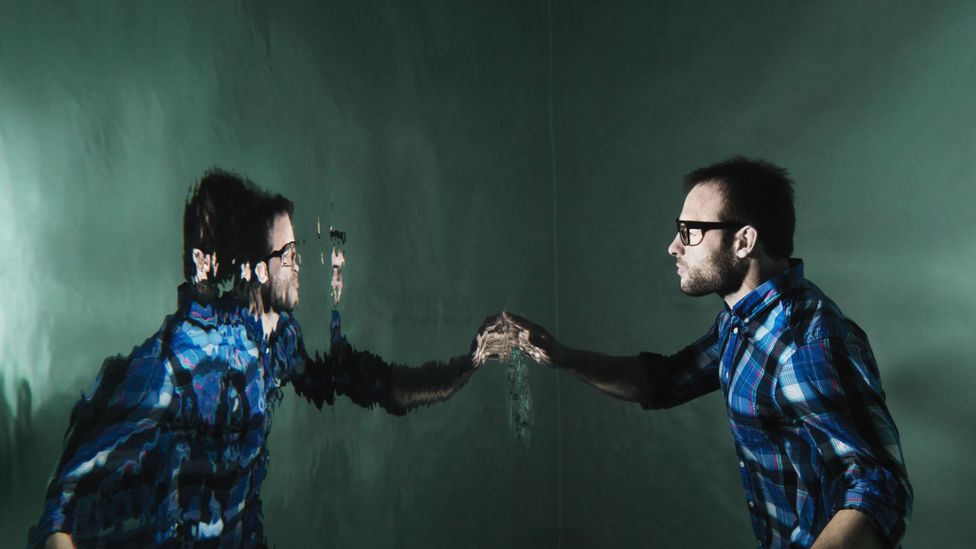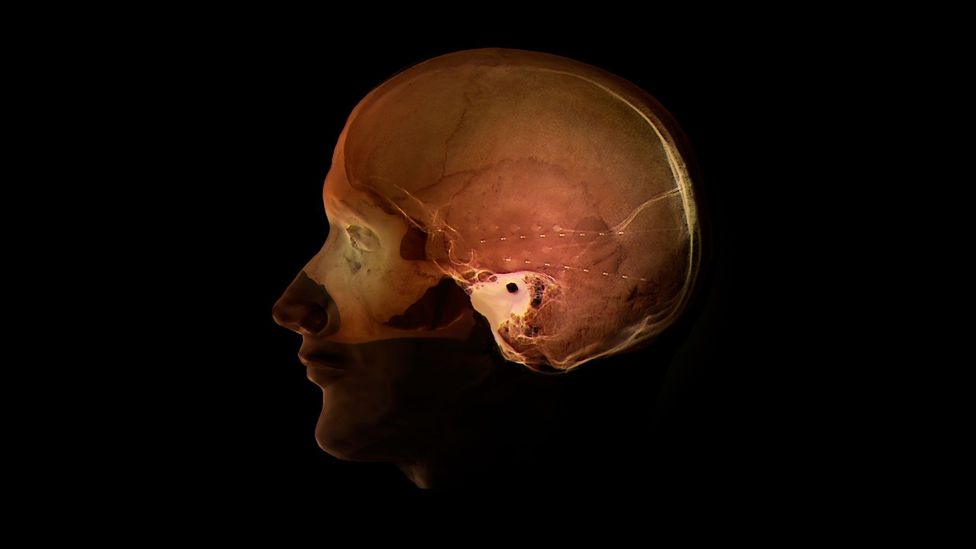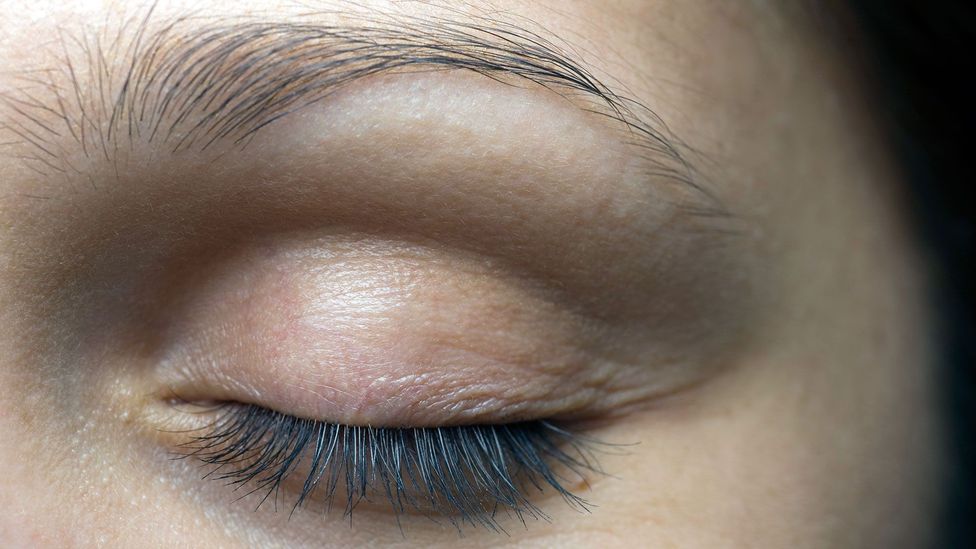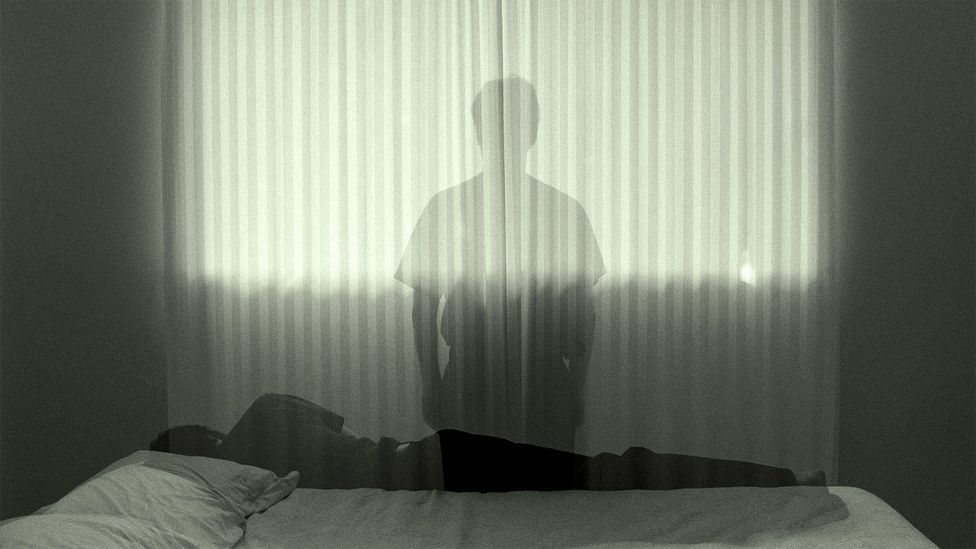Seen Three Figures in My Bedroom With Their Backs to Me, What Does It Mean
The disturbing consequences of seeing your doppelganger
(Image credit:
Getty Images
)

One morning, a man discovered his double staring him in the eyes. Anil Ananthaswamy explores a dangerous hallucination that reveals how the brain constructs our sense of self.
M
More than two decades ago, Peter Brugger, as a PhD student in neuropsychology at the University Hospital Zurich in Switzerland, was developing a reputation as someone interested in scientific explanations of so-called paranormal experiences. A fellow neurologist, who had been treating a 21-year-old man for seizures, sent him to Brugger. The young man, who worked as a waiter and lived in the canton of Zurich, had very nearly killed himself one day, when he found himself face-to-face with his doppelganger.
The incident seemed to have been started when the young man had stopped taking some of his anticonvulsant medication. One morning, instead of going to work, he drank copious amounts of beer and stayed in bed. But it turned out to be a harrowing lie-in.
He felt dizzy, stood up, turned around, and saw himself still lying in bed. He was aware that the person in bed was him, and was not willing to get up and would thus make himself late for work. Furious at the prone self, the man shouted at it, shook it, and even jumped on it, all to no avail. To complicate things further, his awareness of being in a body would shift from one body to the other. When he inhabited the supine body in bed, he'd see his duplicate bending over and shaking him.
Soon, fear and confusion took hold: Who was he? Was he the man standing up or the man lying in bed? Unable to stand seeing his double any longer, he jumped out of the window.

Sometimes the sense of self can split in two - with eerie consequences (Credit: Getty Images)
When I visited Brugger in the autumn of 2011, he showed me a photograph of the building from which the man had jumped. The patient had been extremely lucky. He had leapt from a window on the fourth floor and landed on a large hazel bush, which had broken his fall. But he had not really wanted to commit suicide, said Brugger. He had jumped to "find a match between body and self". After getting treatment for his fall-related injuries, the young man underwent surgery to remove a tumour in his left temporal lobe, and both the seizures and the bizarre experiences stopped.
Such hallucinations are classified as autoscopic phenomena (from "autoscopy"; in Greek, autos means "self" and skopeo means "looking at"). The simplest form of an autoscopic phenomenon involves feeling the presence of someone next to you without actually seeing a "double" – a sensed presence. The doppelganger effect takes this phenomenon a step further, so that a person may hallucinate that they are actually seeing and interacting with another "me" – a visual double. But probably the most widely experienced and best-known form of autoscopic phenomena is the out-of-body experience (OBE). During a classic full-blown OBE, people report leaving their physical body and seeing it from an outside perspective, say from the ceiling looking down at the body lying in bed.
Despite their vividness, they are all hallucinations caused by malfunctions in brain mechanisms that root us in the here and now. The strange experiences are probably our best window on some very basic aspects of our sense of bodily self – explaining how the brain builds our perception of being present in the here and now, and the subjective, emotional feelings that dominate our consciousness.
Electrifying experience
Some clues come from the work of Olaf Blanke, a neurologist a Swiss Federal Institute of Technology in Lausanne. In 2002, Blanke managed to induce repeated out-of-body experiences in a 43-year-old woman. He had been treating her for drug-resistant temporal-lobe epilepsy. Brain scans did not show any lesions, so Blanke resorted to surgery to figure out the focus of her epilepsy.
His team inserted electrodes inside the cranium to record electrical activity from the cortical surface directly, rather than from outside the skull as you would if you were using standard EEG. During this procedure, the woman volunteered to have her brain stimulated using the implanted electrodes. This technique allows surgeons to double-check that they've really found the cause of the seizure, while also ensuring that they don't excise some key brain region. And not just that. The procedure, pioneered by Canadian neurosurgeon Wilder Penfield, is often the best way to find out the function of different brain regions, and much of what we have learned about the brain has come from courageous patients who have let themselves be stimulated while conscious.
It was during such a procedure that Blanke found that he could cause the woman to report some rather weird sensations, by stimulating a single electrode, placed on the right angular gyrus, a small region towards the back of the skull.

Epilepsy patients are often fitted with electrodes to record their brain's output (Credit: Science Photo Library)
When the stimulating current was low, she reported "sinking into the bed" or "falling from a height"; when Blanke's team increased the amperage, she had an out-of-body experience: "I see myself lying in bed, from above," she said. The angular gyrus lies near the vestibular cortex (which receives inputs from the vestibular system that's responsible for our posture and sense of balance). Blanke concluded that the electrical stimulation was somehow disrupting the integration of various sensations such as touch with vestibular signals, leading to the woman's OBE.
The next step was to try to produce OBEs in healthy participants. In 2005, philosopher Thomas Metzinger proposed an experiment and teamed up with Blanke and Blanke's then student Bigna Lenggenhager, and designed an elegant experiment. A camera filmed a subject from behind, and the images were sent to a 3D head-mounted display that the subject was wearing. The subject could see only what was being shown in the display, which was the back of his or her own body, seen in 3D and about seven feet in front.
The experimenter would then stroke the person's back with a stick. The subjects would feel the stroking on their backs, but would also see themselves being stroked in the head-mounted display. The stroking was either synchronous or asynchronous (to make it asynchronous, the video feed was delayed a smidgen, so the subject felt the touch first but saw the virtual body being stroked an instant later). In the synchronous condition, once the illusion set in, some subjects (but not all) reported feeling the touch in the location of the virtual body about seven feet in front of them and that the virtual body felt like their own. They had experienced ownership of an illusory body – an aspect of the doppelganger experience.
A few years later, Blanke's team upped the ante. They rigged a setup that allowed them to conduct the same experiment inside a scanner. The subject was lying down, and a robotic arm stroked the subject's back. Meanwhile, the subject viewed through a head-mounted display a video of a person being stroked on the back. The robotic arm's stroking was either synchronous or asynchronous with stroking of the virtual person seen on the display. Again, in some subjects, their sense of location and sense of body ownership were shaken up. One of the most striking outcomes was when a subject reported looking at their own body from above, even though the subject was lying prone, face-up, in the scanner.

Scientists can now create out-of-body experiences in the lab - experiments that help them probe the brain's self-consciousness (Credit: Thinkstock)
"That was for us really exciting, because it gets really close to the classical out-of-body experience of looking down at your own body," said Lenggenhager, who is now working in Peter Brugger's group at the University Hospital Zurich.
The subjects were scanned during their experiences, and the scans revealed that their sense of being out-of-body was correlated with activity in the temporoparietal junction (TPJ), a site that integrates touch, vision, proprioception, and vestibular signals. Here was some objective evidence that the TPJ is involved in the sense of self-location – where you perceive yourself to be.
That's significant: it is part of a network of regions (including the angular gyrus) that integrate various sensations to create a sense of the bodily self. Together, they combine the different external sensations with sensations that tell the brain about the orientation of the body and the location of body parts, and signals from inside the body, such as the viscera (which contain information about the beating heart, blood pressure, and the state of the gut, for example). In other words, it provided further evidence that it is the process of combining all these signals that together give us the feeling of inhabiting our bodies.
Could a similar process explain some particularly strong versions of the doppelganger effect experienced by some people? These powerful experiences often feel mystical – but the process may tell us a lot about the body, emotions and the subjective feeling of a bodily self. Chris may offer the most startling account. His brother, David, had died of AIDS a few months previous to this strange episode. It was early in the morning. Chris got off the bed, stood up, and walked toward the end of the bed, where there was a dresser. He stretched and turned around and got the fright of his life.
"The shock was electric," Chris recalled. "Because I was still lying in the bed sleeping, and it was very clearly me lying there sleeping, my first thought was that I had died. I'm dead and this is the first step. I was just gasping. My head was spinning, trying to get a grip on things."
And then the phone rang. "I don't know why, but I picked up the phone and said, 'Hello.' It was David. I immediately recognised his voice. I was overwhelmed, but at the same time I had this incredible sensation of joy." But David didn't stay on the line for long. "He told me that he didn't have much time and he just wanted me to know that he was all right, and to tell the rest of the family, then he hung up," Chris said. "And then there was this enormous sucking sensation," said Chris, making a long, drawn-out slurping sound. "I felt like I was dragged, almost thrown, back into the bed, smack into myself." He woke up screaming. His wife, Sonia, who was asleep next to him, woke up to find a hysterical Chris.
"I was totally freaked out, I was shaking all over, I was sweating, my heart was beating like a racehorse's," said Chris. Chris grew up in a scientific household. His upbringing was at odds with this experience. "My heart tells me that David was letting me know that he was OK. I really believed at the time that he was somehow communicating with me from beyond death," Chris said. "But my intellectual side says that's just silly. But it's so hard to rationalise; the experience was so real."

Your perspective can often switch between your real body and the doppelganger, causing some very strange sensations (Credit: Getty Images)
What Chris experienced was a particularly intense doppelganger effect, also known in neuroscientific jargon as heautoscopy. It is different from other out-of-body experience in many ways. For instance, during heautoscopy, you perceive an illusory body, and your centre of awareness can shift from within the physical body to the illusory body and back – there's self-location and self-identification with a volume in space, whether that volume is centred on the physical body or the illusory body. The other key components of heautoscopy are the presence of intense emotions and the involvement of the sensory-motor system.
"Usually, the double is moving and there is interaction, there is sharing of emotions, of thoughts, and that's what's giving the impression of a doppelganger," said neurologist Lukas Heydrich, who was at the Swiss Federal Institute of Technology in Lausanne when I met him.
Using data from brain scans, Heydrich and Blanke have found that patients who have reported heautoscopic hallucinations typically show damage to the left posterior insula and adjacent cortical areas. Given that heautoscopic hallucinations involve emotions, it's revealing that the insular cortex is implicated. The insula is the hub that integrates visual, auditory, sensory, motor, proprioceptive, and vestibular signals with signals from the viscera. It's the brain region where the body's states seem to be represented and the representations are eventually manifested as subjective feelings, giving rise to the perception of a bodily self.
When abnormalities arise in the integration, it's as if there are now two representations of the body instead of one, and somehow the brain has to choose the representation in which to anchor the self, or rather choose which representation to imbue with self-location, self-identification, and first-person perspective.
The "minimal self"
Based on all these findings, Metzinger and Blanke think they are ready to examine the more philosophical aspects of our beings – such as what is needed to create a sense of embodiment (the "minimal phenomenal self"). One surprising conclusion is that the sense of agency is not key to this state, since you can create a sense of being a body in some other location by merely passively stroking someone's back and messing with their visual input. "From a philosopher's point of view, it is important to find out what is necessary and what is sufficient for self-consciousness," Metzinger told me. "We have shown that something that most people think is necessary is not necessary, namely agency."
Rather, Metzinger argues that this feeling of being embodied comes before everything else. The next step in the process is when this primitive selfhood, turns into selfhood as subjectivity. "If you not only feel that you are in that body, but if you can control your attention, and attend to the body, that's a stronger form of selfhood," said Metzinger. "Then you are something that has a perspective, something that is directed at the world, and something that can be directed at itself. That is more than mere embodiment."
One idea is that minimal phenomenal self may also act as a thread through our autobiographical memories, helping us to build a narrative through our own life story; some experiments have shown that, despite the intense sensations, out-of-body experience weakens your memories – perhaps because they aren't so tightly anchored to the bodily self.
If we are now beginning to understand the neural underpinnings of the self, many questions remain. Why did it evolve in the first place, for instance? Most likely as an adaptation that let the organism orient itself and function better in its environment. If the brain evolved to help the body avoid surprises and remain in homeostatic equilibrium and to effectively move around in its environment, then representing the body in the brain was a necessary step to fine-tune these abilities. Eventually, this representation became conscious, further enabling the organism to be aware of the body's strengths and weaknesses, which must have given it a survival advantage. But in this case, rather than physical attributes, it was the self that was being honed in evolutionary time.
Regardless of how complex our self feels to us – with its conceptual and autobiographical aspects – autoscopic phenomena are showing us that it all begins with the body. As Metzinger writes in his book The Ego Tunnel, "'Owning' your body, its sensations, and its various parts is fundamental to the feeling of being someone." It's no wonder that Brugger's young patient took the drastic step of jumping out of the fourth floor to reconcile body and self – he was desperate to become himself again, of one body and mind.
This article is based on a chapter of Anil Ananthaswamy's book, The Man Who Wasn't There (Dutton).
Follow BBC Future on Facebook , Twitter , Google+ and LinkedIn .
Seen Three Figures in My Bedroom With Their Backs to Me, What Does It Mean
Source: https://www.bbc.com/future/article/20150821-the-dangerous-consequences-of-seeing-your-doppelganger
0 Response to "Seen Three Figures in My Bedroom With Their Backs to Me, What Does It Mean"
Publicar un comentario